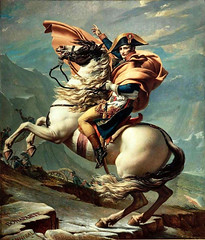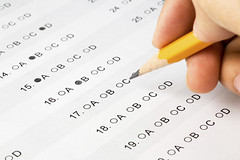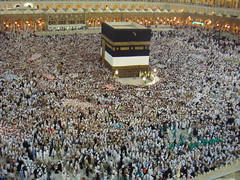| 4230769077 | Three controversies | nature/nurture
continuity/stage
stability/change | | 0 |
| 4230769078 | nature/nurture | nature:genes and biology
nurture: learning and environment | | 1 |
| 4230769079 | continuity/stage | continuity: flows
stage: certain level of development than make leap; incapable of more advance thought until you are and then you are | | 2 |
| 4230769080 | stability/change | stability: do we stay the same
change: do experiences and environment change us | | 3 |
| 4230769081 | critical period | A time during development during which exposure to language is essential for eventual development of effective use of language; between two years of age and puberty
-most important time for learning | | 4 |
| 4230769082 | maturation | biological processes that enable orderly changes in behavior, relatively uninfluenced by experiences | | 5 |
| 4230769083 | Chomsky(Nature) | -all languages share a common universal language
-children inherit a mental program(language acquisition divide) to learn this universal grammar | | 6 |
| 4230769084 | universal grammar | Chomsky-no dialect or language is more complex or sophisticated than the other. We are all born with the capacity to learn any language w/o formal instruction | | 7 |
| 4230769085 | language acquisition device | Chomsky's concept of an innate, prewired mechanism in the brain that allows children to acquire language naturally | | 8 |
| 4230769086 | Skinner(Nurture) | -children's language is reinforced
-positive and negative reinforcement
-repeat those responses that bring about the desired behavior | | 9 |
| 4230769087 | reinforcement | Skinner; An event following a response that strengthens the tendency to make that response | | 10 |
| 4230769088 | mimicry | Skinner; Structural adaptation that enables one species to resemble another species | | 11 |
| 4230769089 | receptive language | ability for infants at about 4 months to understand what is said to and about them | | 12 |
| 4230769090 | productive language | The ability to speak and write. You use the language that you have acquired to produce a message through speech or written text | | 13 |
| 4230769091 | over-generalization | an error that involves coming to a conclusion based on information that is not specific enough
-ex: I go'ed there yesterday and saw the mouses | | 14 |
| 4230769092 | Phoneme | in language, the smallest distinctive sound unit | | 15 |
| 4230769093 | morpheme | in language, the smallest unit that carries meaning | | 16 |
| 4230769094 | grammar | in a language, a system of rules that enables us to communicate with and understand others | | 17 |
| 4230769095 | syntax | Language rules that govern how words can be combined to form meaningful phrases and sentences | | 18 |
| 4230769096 | semantics | Meaning of words and sentences | | 19 |
| 4230769097 | Whorf's Theory of Linguistic Determinism | Whorf's hypothesis that language determines they way we think | | 20 |
| 4230769098 | Broca's Area | pre-wired to combine sounds into words and grammar
-frontal lobe/left side
-speech
-production of actual sounds of language; where we come up with syntax. | | 21 |
| 4230769099 | Wernicke's Area | pre-wired to combine words into sentences
-left hemisphere
-comprehension | | 22 |
| 4230769100 | Prenatal | before birth
-zygote, embryo, fetus | | 23 |
| 4230769101 | zygote | Fertilized egg | | 24 |
| 4230769102 | embryo | An organism in the earliest stage of development | | 25 |
| 4230769103 | fetus | In humans, the term for the developing organism between the embryonic stage and birth. | | 26 |
| 4230769104 | Teratogen | Agents, such as chemicals and viruses, that can reach the embryo or fetus during prenatal development and cause harm
-ex: FAS | | 27 |
| 4230769105 | Neonate | newborn baby | | 28 |
| 4230769106 | Reflexes of Neonate | rooting reflex, sucking, swallowing, grasping reflex, moro (startle) reflex
-decrease via habituation | | 29 |
| 4230769107 | Infantile Amnesia | the inability to remember events from early childhood | | 30 |
| 4230769108 | Schema | a conceptual framework that organizes information and allows a person to make sense of the world | | 31 |
| 4230769109 | assimilation | take in information and put it into pre-existing categories
-Piaget | | 32 |
| 4230769110 | accommodation | accommodate new knowledge and make new category | | 33 |
| 4230769111 | Piaget | Stage theorist
-cognitive development forms through stages
-once you hit a stage, you don't go back |  | 34 |
| 4230769112 | Piaget: Stage 1: Sensorimotor | stage when we experience world through senses, actions
-object permanence:the awareness that things continue to exist even when not perceived
-stranger anxiety | | 35 |
| 4230769113 | Piaget: Stage 2: Preoperational | stage when we have mental representations with words and images; intuitive rather than logic
-theory of self(mind)
-animism: has life even when it does not
-ego-centrism:think everything is about them | | 36 |
| 4230769114 | Piaget: Stage 3: Concrete Operational | stage when we think logically about concrete events
-law of conservation: ability to recognize that objects can be transformed in some way, visually or phycially, yet still be the same in number, weight, substance, or volume | | 37 |
| 4230769115 | Piaget: Stage 4: Formal Operational | stage with abstract reasoning
-abstract logic
-potential for mature moral reasoning
-ideal thoughts | | 38 |
| 4230769116 | Lev Vgotsky | Continuity Theorist; theorist that believes learning progresses continuously; learning brings out development | | 39 |
| 4230769117 | Socio-Cultural Theory | thoughts are constructed by the people around us and pull you along | | 40 |
| 4230769118 | MKO | More Knowledgeable Other (Vygotsky) who has a better understanding or a higher ability level with respect to some concept or task | | 41 |
| 4230769119 | ZPD | Zone of Proximal Development. Best area of teaching/level of difficulty. Not too challenging that students tune out, but not so low that they aren't challenged with new skills | | 42 |
| 4230769120 | Scaffolding | Vygotskian learning mechanism in which parents provide initial assistance in children's learning but gradually remove structure as children become more competent | | 43 |
| 4230769121 | Ainsworth | theorist that studied types of attachment by use of the strange situation test | | 44 |
| 4230769122 | secure/insecure attachment | secure attachment: child explores confidently, is distressed when parent leaves
insecure attachment:
infants either avoid, show resistance, or show ambivalence towards caregivers | | 45 |
| 4230769123 | Stranger Anxiety | fear of strangers, usually occurs around 8 months | | 46 |
| 4230769124 | Harlow | researcher that highlighted the importance of physical contact comfort in the formation of attachments with parents (monkeys) | | 47 |
| 4230769125 | Contact Comfort | stimulation and reassurance derived from the physical touch of a caregiver | | 48 |
| 4230769126 | James Marcia | studied adolescent stage of Erikson; divided adolescent into four groups: diffusion, foreclosure, moratorium, and achievement |  | 49 |
| 4230769127 | identity diffusion | Identity status, described by Marcia, that is characterized by absence of commitment and lack of serious consideration of alternatives | | 50 |
| 4230769128 | identity foreclosure | Marcia's stage in which adolescents prematurely commit to an identity without adequately exploring alternatives | | 51 |
| 4230769129 | identity moratorium | Marcia's term for the status of individuals who are in the midst of a crisis, but their commitments are either absent or vaguely defined | | 52 |
| 4230769130 | identity achievement | commitment to values, beliefs, and goals following a period of exploration | | 53 |
| 4230769131 | puberty vs. adolescence | puberty: Developmental stage at which a person becomes capable of reproduction
adolescence: the transition period from childhood to adulthood, extending from puberty to independence | | 54 |
| 4230769132 | Primary sex characteristics | the body structures (ovaries, testes, and external genitalia) that make sexual reproduction possible | | 55 |
| 4230769133 | Secondary sex characteristics | nonreproductive sexual characteristics, such as female breasts and hips, male voice quality, and body hair | | 56 |
| 4230769134 | menarche | beginning of menstruation | | 57 |
| 4230769135 | Adulthood physical changes | | | 58 |
| 4230769136 | Menopause | The time of natural cessation of menstruation; also refers to the biological changes a woman experiences as her ability to reproduce declines | | 59 |
| 4230769137 | adolescent brain | -cerebral cortex(high thinking): undergoes growth between 11-12; followed by pruning
-amygdala(emotional): over-active in adolescence in relation to fully adult brains
-cerebellum(coordination): undergoes tremendous growth and changes during teen years | | 60 |
| 4230769138 | myelination | the protective coating; it is still being added during young adult life | | 61 |
| 4230769139 | fluid and crystallized intelligence | fluid intelligence: one's ability to reason speedily and abstractly; tends to decrease during late adulthood.
crystallized intelligence: one's accumulated knowledge and verbal skills; tends to increase with age | | 62 |
| 4230769140 | Dementia | An abnormal condition marked by multiple cognitive defects that include memory impairment. | | 63 |
| 4230769141 | Alzheimer's | causes cell death and tissue loss in brain
-a type of dementia that causes problems with memory, behavior, and thinking | | 64 |
| 4230769142 | Kohlberg's Stages of Moral Development | 1. Pre-conventional: punishment avoidance, getting what you want by trade off
2. Conventional: meeting expectations, upholding laws and fulfilling duties
3. Post-conventional: sense of democracy and relativity of rules, self-sensation of universal principles | | 65 |
| 4230769143 | Gilligan | examined moral differences between boys and girls based on social rules and on ethic of caring and responsibility (turtle and Hare scenario) | | 66 |
| 4230769144 | Sternberg's Theory | Distinguishes more simply among 3 aspects of intelligence: analytical, creative, and practical
-consummate love | | 67 |
| 4230769145 | Consummate Love | In Sternberg's triangular theory of love, this type of love includes intimacy, passion, and commitment. The ideal form of love that many people see as the ultimate goal. | | 68 |
| 4230769146 | Stages of Grief(DABDA) | denial, anger, bargaining, depression, acceptance | | 69 |
| 4230769147 | Elizabeth Kubler Ross | psychologist who created the 5 stages of grief: denial, anger, bargaining, depression, acceptance | | 70 |
| 4230769148 | Erik Erikson | stage theorist; 8 stages of psychosocial development | | 71 |
| 4230769149 | trust vs. mistrust | erikson's first crisis when infants learn whether the world can be trusted to satisfy the basic needs | | 72 |
| 4230769150 | autonomy vs. shame and doubt | erikson's second crisis when toddlers learn to experience will and do things for themselves, or they will doubt their abilities | | 73 |
| 4230769151 | initiative vs. guilt | erikson's third crisis when preschoolers learn to initiate tasks and carry out plants, or they feel guilty about efforts to be independent | | 74 |
| 4230769152 | competence vs. inferiority | erikson's fourth crisis when elementary school children learn the pleasure of applying themselves to tasks or they feel inferior | | 75 |
| 4230769153 | identity vs. role confusion | erikson's fifth crisis when adolescent teenagers work at refining a sense of self by testing roles and the integration them to form a single identity, or they become confused about who they are | | 76 |
| 4230769154 | intimacy vs. isolation | erikson's sixth crisis when young adults struggle to form close relationship and to gain capacity for intimate love or they feel socially isolated | | 77 |
| 4230769155 | generativity vs. stagnation | erikson's seventh crisis when middle aged people discover a sense of contributing to the world, usually through family or work, or they may feel a lack of purpose | | 78 |
| 4230769156 | integrity vs. despair | erikson's eighth crisis when reflecting on his or her life, the older adult may feel a sense of satisfaction or failure | | 79 |
| 4230769157 | primary crisis of adolescence | identity | | 80 |
| 4230769158 | primary crisis of adulthood | work and love | | 81 |
| 4230769159 | Meta-analysis | a procedure for statistically combining the results of many different research studies | | 82 |
| 4230769160 | cross-sectional study | study different ages in present time | | 83 |
| 4230769161 | longitudinal study | follow for long period | | 84 |
| 4230769162 | cohort study | divide(like cross-sectional) by age; follow for short period | | 85 |
| 4230769163 | development psychologists | focus on changes over one's lifespan
-look at changes in physical, cognitive, moral, language, social development | | 86 |
| 4231244602 | linguistic determinisme | the idea that thinking patterns are determined by the way we speak. | | 87 |






















































































































